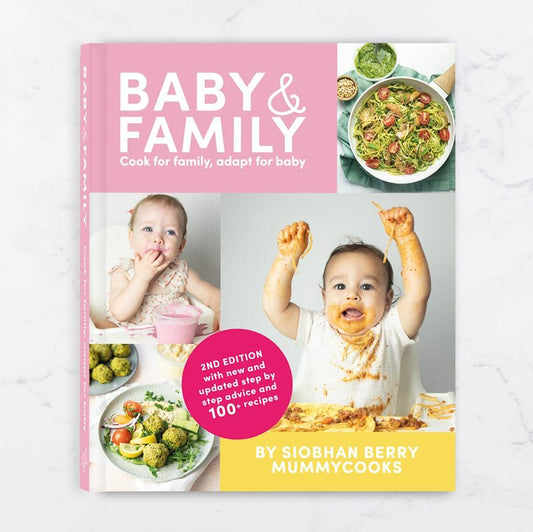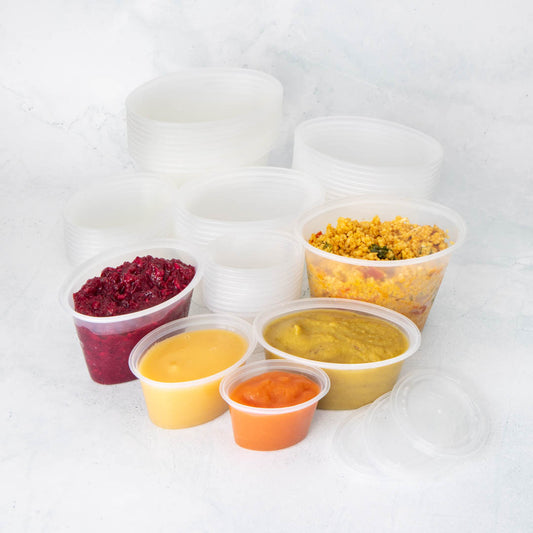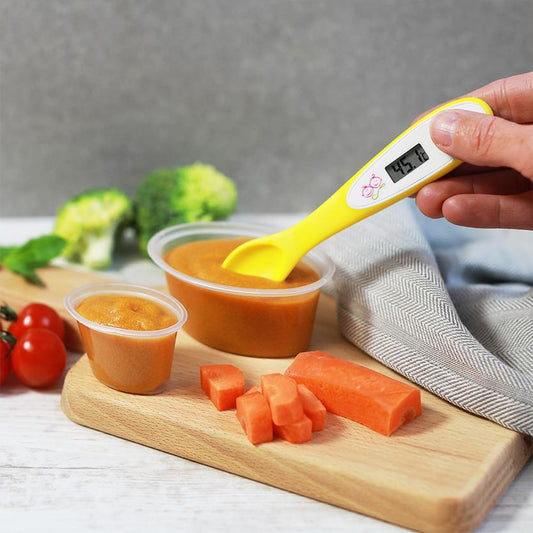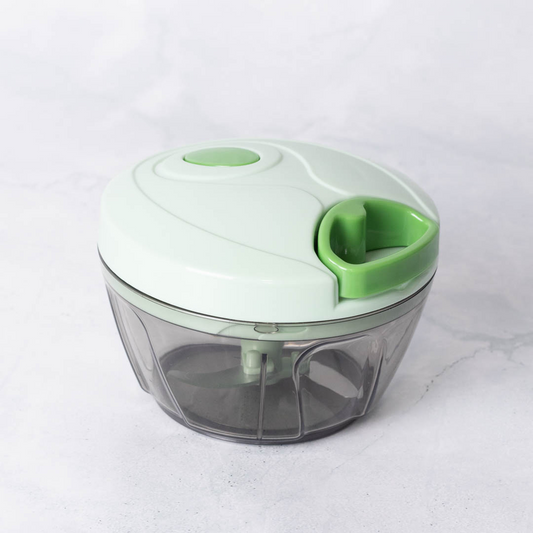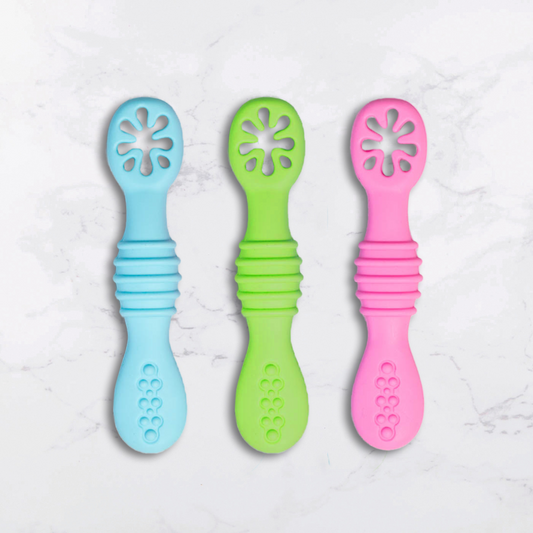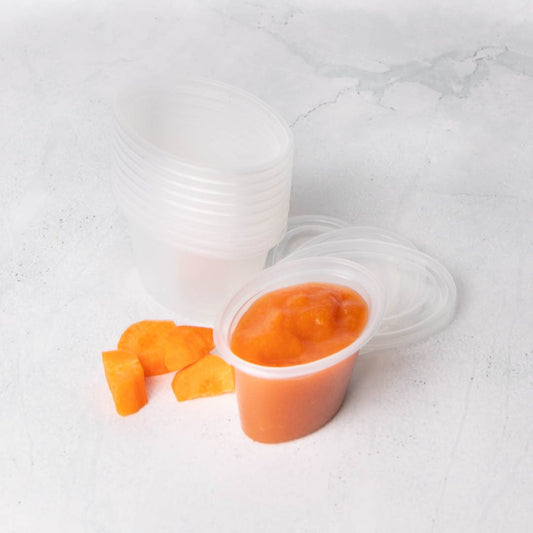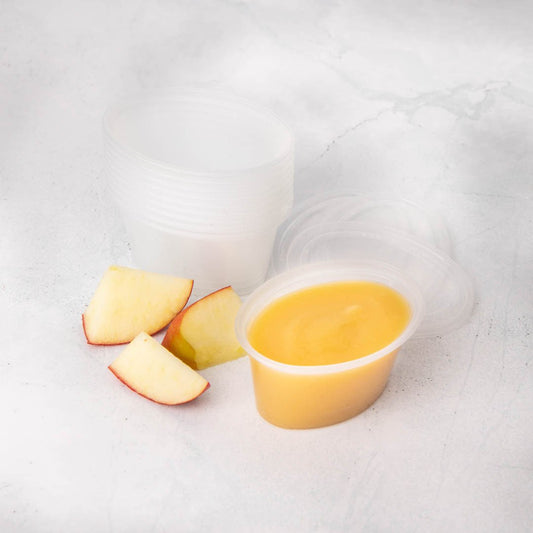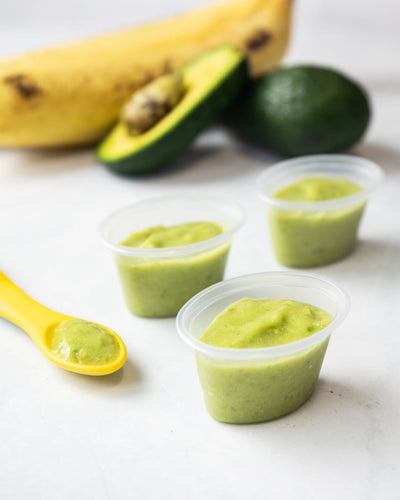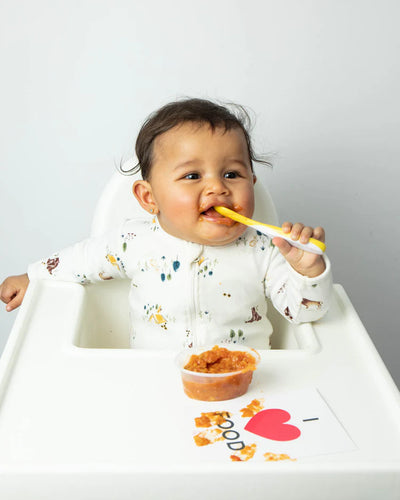The teething process can be confusing and frustrating for caregivers. Here I discuss some of the most common teething symptoms, explain how they relate to teething, and offer suggestions on how to soothe your little one during this potentially uncomfortable time.
When Do Babies Start Teething?
Typically, teeth start coming in at around four to eight months of age with the lower front teeth and continue until 30-36 months of age when the last set of molars are visible.
The signs of teething:
- Irritability
- Disruptive sleep
- Swelling or inflammation of the gums
- Drooling
- Loss of appetite
- Rash around the mouth
- Redness on the cheek
- Mild temperature
- Diarrhoea
- Increased biting and gum rubbing and even ear rubbing
What Order Do Babies Teeth Come In?
This is a rough guide to how a baby's teeth usually appear but it is not always the case:
- Usually, the bottom incisors (bottom front teeth) are the first to erupt, usually at about the age of four to seven months.
- Six to eight months are usually when the top incisors (top front teeth) appear.
- In between 9 and 11 months, the top lateral incisors (both sides of the top teeth) appear.
- It takes 10 to 12 months for the bottom lateral incisors (the teeth on either side of the bottom front teeth) to emerge.
- About 12-16 months old, the first molars (back teeth) emerge.
- When it comes to the 16 to 20 months the canines (the teeth between the lateral incisors and the first molars) start to emerge.
- The final set of teeth come roughly around the 20-to-30-month period the second molars.
By the time your child is 2 and a half, they should have all their milk teeth.
How to soothe your teething baby:
- Try giving your baby something to chew on, like a Teether.
- Massage your child's sore gums with sugar-free teething gel.
- If your child wakes up at night and is irritable, use a mild sugar-free pain reliever.
- Give them cold water - this helps keep the baby hydrated and also soothes the gums.
- Feed healthy, firmer foods to chew on as part of your baby’s meal routine from 6 months or older. Foods like carrot or apple slices, or breadsticks work great.
At Mummy Cooks, we have a wealth of advise on feeding the family .We cover everything from meal prep and slow cooker recipes to moving baby on to family foods and preparing food safely. So whether you're looking for quick and easy meal ideas or want to learn about healthy eating, we've got you covered - Feeding the Family Advise page

Picking a Teether
- Chewing on teethers can help soothe your baby's gums and distract them from pain in their mouth.
- Use a teether like our Quadopus Teether that is big enough so your child doesn't choke. Keep a spare, clean teething ring in the fridge or nearby.
- Ensure you purchase a Teether designed to be free from toxic plastics, free from BPA and food safe like our range. Do not confuse ring toys with teethers as toys are not food safe for your baby to place in their mouth - toxic dyes and plastics can leech out of these.
Teething Gels and Pain Relief
- Sugar-free teething gels are available over the counter at the pharmacy - they contain a mild local anaesthetic to help numb any pain. These are suitable for babies over 4 months old.
- If your baby is still uncomfortable after using the teething gel, consider giving them unsweetened paracetamol or ibuprofen medication. Do not use ibuprofen medicine if your baby is under 3 months old.
- Always contact your GP or pharmacist for information on the safe use of the gel and pain relief.
- Never use products intended for adults or older children on your baby. These products are not designed to relieve teething symptoms in babies.
Our Weaning Advice page provides information and advice on weaning your baby. It includes recipes, tips, and articles on a variety of topics related to weaning, such as introducing finger food, adding herbs and spices to baby food, and healthy snacks for your baby, and lots more.



